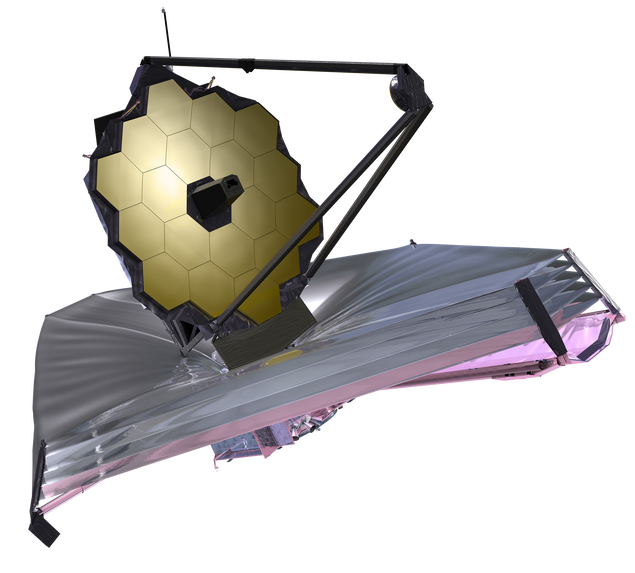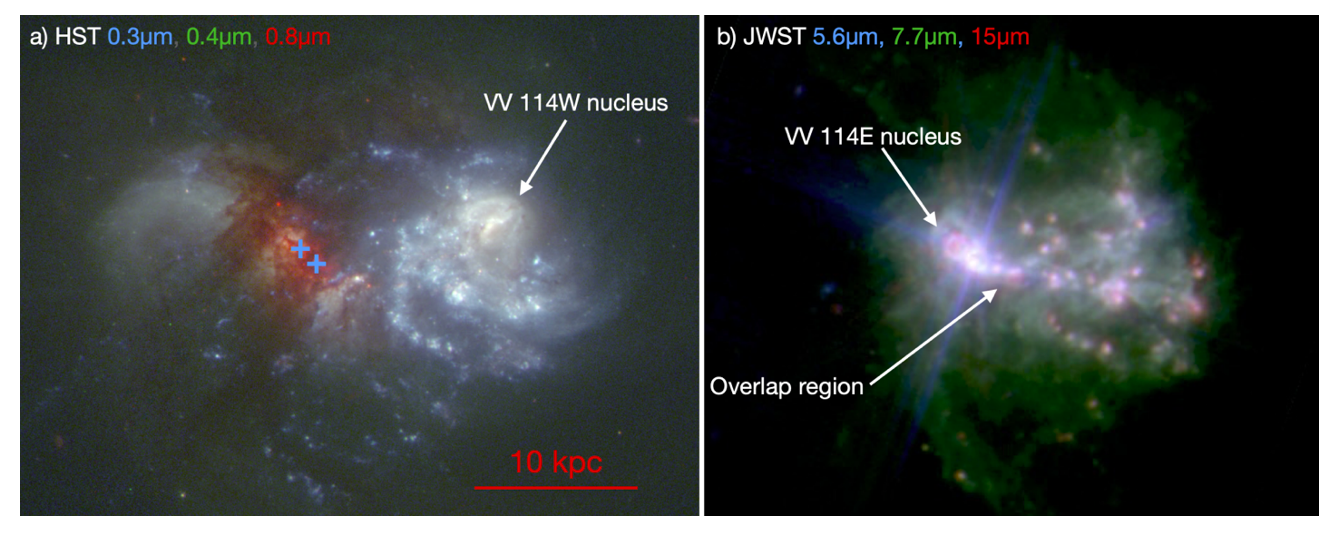Revealing the hidden nuclei of galaxies with JWST
The James Webb Space Telescope (JWST) is the largest infrared telescope facility ever sent to space, and is poised to provide a tremendous leap forward in our quest to understand how the first galaxies in the Universe formed and assembled over cosmic time. To realize JWST’s full science potential and help the science community early on, the Director’s office created the Early Release Science (ERS) program.

Dr. Tanio Diaz Santos and Prof. Vassilis Charmandaris of IA- FORTH actively participates in this initiative as members of the ERS program “A JWST Study of the Starburst-AGN Connection in Merging LIRGs”, led by Dr. Lee Armus (Caltech) and Prof. A. Evans (Univ. of Virginia). The goal of this project is to transform our understanding of galactic evolution, providing a detailed look at the physics of star formation and black hole growth in nearby merging galaxies. Photometric (NIRCam and MIRI/Imager) and spectroscopic (NIRSpec and MIRI/MRS 3D) observations are currently being obtained, to unveil the dynamics and energetics of the interstellar medium on scales of 50-100pc in the nuclei of a few local Luminous Infrared Galaxies (LIRGs) selected from the Great Observatories All-sky LIRG survey (GOALS). Recently, spectacular JWST results on two galaxies of the sample, VV 114 and IIZw 096, have been published as Letters to the Editor of the Astrophysical Journal.

VV 114 is an interacting system with a western component (VV 114W) rich in optical star clusters and an eastern component (VV 114E) hosting a luminous mid-IR nucleus hidden at UV and optical wavelengths by dust lanes. Thanks to JWST/MIRI, the VV 114E nucleus is now resolved primarily into bright NE and SW cores separated by 630 pc, or ~ 2000 light years (see Fig 1). Moreover, this nucleus comprises 45% of the 15µm light of VV 114, with the NE and SW cores having IR luminosity surface densities as large as those in the Orion star-forming core, the most active star-forming region in our Galaxy, and the nuclei of Arp 220, the archetype of the infrared-luminous galaxy merger population. The NE core, previously speculated to have an Active Galactic Nucleus (AGN), has starburst-like mid-IR colors. In contrast, the VV 114E SW has AGN-like colors, suggesting that a buried super-massive black hole is lurking at its center. Diffuse emission accounts for 40-60% of the mid-IR emission, and mostly notably, filamentary Polycyclic Aromatic Hydrocarbon (PAH) emission stochastically excited by UV and optical photons accounts for half of the 7.7µm light of VV 114.

IIZw 096 is an interacting LIRG system in which previous observations with the Spitzer Space Telescope suggested that the vast majority of the total IR luminosity of the system originated from a small region outside of the two merging nuclei. The new JWST/MIRI observations (Fig. 2) now allow for an accurate measurement of the location and luminosity density of the source that is responsible for the bulk of the IR emission. The study estimates that 40-70% of the infrared luminosity of the galaxy, which shines with the power of around 500 billion Suns, arises from a source no larger than 570 light-years in radius, suggesting a luminosity density close to the maximum limit allowed by the predictions of some theoretical models. In addition, the study detects 11 other star forming sources, five of which were previously unknown and undetected by the Hubble Space Telescope (HST). The MIRI mid-IR colors of most of these sources (see Fig. 2), including the source responsible for the bulk of the far-IR emission, are much redder than the nuclei of local LIRGs, suggesting they are extremely obscured by dust.
More results JWST of the GOALS galaxies are available here.
Articles:
- A.S. Evans, et al. (including V. Charmandaris & T. Diaz Santos), "GOALS-JWST: Hidden Star Formation and Extended PAH Emission in the Luminous Infrared Galaxy VV 114", 2022, ApJ Letters, 940, 8
- H. Inami, et al. (including V. Charmandaris & T. Diaz Santos), "GOALS-JWST: Unveiling the Heavily Dust Obscured Compact Sources in the Merging Galaxy IIZw096", 2022, ApJ Letters, 940, 6
